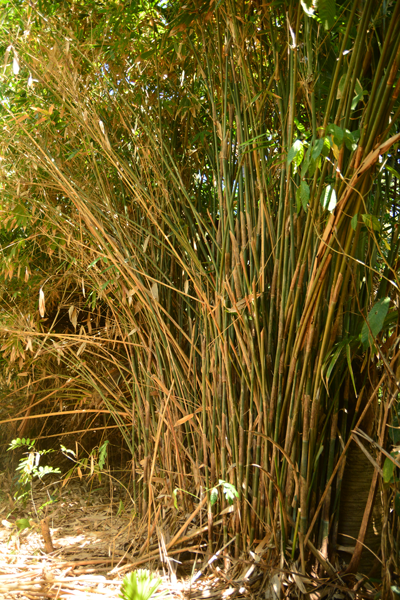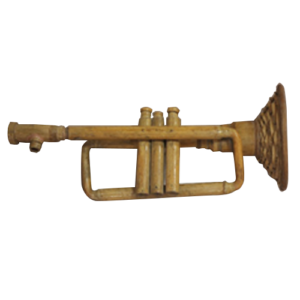Schizostachyum lima (Blanco) Merr.
Anos (Tag.); bagakai (Bik., C. Bis., P. Bis.); Bitu (Pamp.); Bolo (Ilk.); Buho (P. Bis.); Lakap (Buk.); Nap-nap (C. Bis.); Sumbiling (Tagb.)
Schizostachyum lima (Blanco) Merr.
Bambos lima Blanco. Fl. Filip. ed. 1 (1837) 271; Merrill, Philipp.
- Sci. 1 (Suppl.), (1906) 388.
Forms clumps, 1–2cm diameter with 240–370 culms. Nodes slightly raised, smooth. Internodes hollow, green, with fine irritating hairs when young, 58.5-75.0 cm long, 1.4-2.8 cm diameter, wall 0.17-0.50 cm thick, powdery inside. Culm sheet auricles indistinct; sheath ligule short, ciliated, cilia 6-15 mm long; sheath blade reflexed, falling early, narrowed upward to acuminate top, up to 10.4 cm long x 0.2-0.3 cm wide at the base. Branches on upper nodes only, extravaginal in development, subequal above the nodal line, as many as 47 per node. Leaves 3-6 in a branch, lanceolate, 8-24 cm long x 1.2-4.2 cm wide, glabrous above, pubescent below, leaf auricle not prominent; leaf ligule ciliated, cilia up to 8 mm long; petiole 2-10 mm long; leaf sheath 5.0-10.5 cm long with deciduous fine hairs when young. Inflorescence and fruits not seen.
Thickets and secondary forests at low and medium altitudes
Ideal for making “sawali” boards owing to its thin culm wall. Young shoots edible. Formerly used in polishing brass metal because of the “sandpapery”nature of hairs on the internodes, hence the epithet “lima”.
It has similar features as S. lumampao, the latter with bigger (taller and wider) culms. It must not be confused with Bambusa dolichomerithalla as discuss earlier.
Science in a creative industry.
The DOST-FPRDI has a Bamboo Musical Instruments Innovation R&D program aimed at improving the quality of locally-made bamboo musical instruments (BMIs) through science and innovative technologies. The program seeks to standardize the production of selected BMIs, develop prototype designs, analyze raw material sources and existing markets, and build a BMI processing facility. In addition, the program aims to document the ethnocultural story behind several BMIs and identify the bamboo species used in BMI production to promote public awareness and appreciation of the cultural importance of these musical instruments. The program is a collaboration with the University of the Philippines and Philippine Normal University for teaching modules and analyzing sound quality and standardization of BMI design. The DOST Grants-in-Aid program provides funding.
PhBMI


